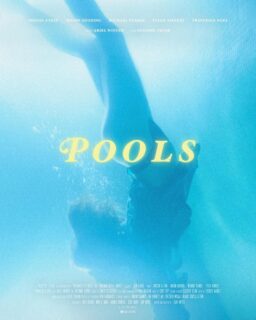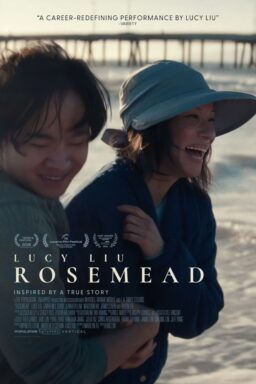New York filmmaker Rebeca Huntt puts her all of life into the malleable form of documentary filmmaking in “Beba,” a gorgeous visual memoir laced with poetry, memory, and truth. Among its many fascinating components, it’s a great example of someone following the unbeatable advice of writing what they know. In this case, Huntt shares her life story about the different ideas that make up who she is: a New York resident, an Afro-Latina woman, the child of first-generation immigrants, a lover of Bob Dylan, a sister, a lover, a tourist in other parts of the world, a learner from all of the above. We are collages of the places we’ve lived and the people we’ve loved, and Huntt colors all of these components vividly so that we can zoom out and see her in full.
“Beba” tells her story chronologically, using grainy film stock used for dreamier inserts, while crisp digital filmmaking captures candid interviews with her family members and friends. In these interviews, Huntt’s filmmaking goes beyond collecting stories from the past, but also about confronting certain modern behaviors or perspectives, sometimes leading to caustic interactions like with her mother. (They get into a divide about microaggressions, which in the context of the doc seem part of Huntt’s emotional growth in their recognition.) This active approach creates a lively portrait of not just Huntt but her family members, in which no one is given a safe presentation (not even the storyteller). Honesty is Huntt’s guiding virtue, even when confronting the family’s history of mental illness and abuse, which she echoes with some of her own actions; even in sequences that are effectively staged so that we can feel what she felt at one moment in time; even in moments that aren’t meant to be for more than family. She films her sister smoking, and the sister asks her to not include it in the film. As we know now, Huntt did.
“Beba” shows how much wisdom and perspective comes from life experience, whether it’s based in immense pain, or curiosity, or outrage, or love. The story becomes its own adventure, in which you love the storyteller more, because of how much they are giving every bit of themselves to the project. That itself creates a sense of awe, and a great desire to see what they do next.

Alison Pill and Sarah Gadon star in Michael McGowan’s “All My Puny Sorrows” as two sisters who come from a history of mental illness, with their father (Donal Logue) having died by suicide. Pill’s Yoli is a writer struggling with the next book; Gadon’s Elf is a concert pianist who is having heavy ideation and then makes an attempt on her own life that puts her in a mental hospital. The chemistry between the two actresses helps give some emotional dynamic to a very sad idea at the center; Elf wants to go to Switzerland for assisted suicide, so that she does not have to die alone, and she can’t get Yoli to ultimately accept her wish. “All My Puny Sorrows” is about a very specific melancholy life experience, and recognizing it, sitting with it, living in it.
The story is adapted from a book by Miriam Toews, and while the film didn’t move me a great deal, it made me curious about the experience of the book. McGowan’s cinematic storytelling tools make the movie all the more familiar and numbing, like austere flashbacks to youth, Yoli’s intermittent voiceover from her book-in-progress, and establishing scenes of wintry Canada that make things seem all the more monochrome. Pill remains at the center, giving a performance with immense range and passion, but one that’s not supported by the writing. Part of the story belongs to Yoli and how Yoli changes, but those undercooked chapters—like about her as a mother, a soon-to-be ex-wife, and bed-partner to a scrub named Finbar—make the flatness of the narrative all the more evident.
“All My Puny Sorrows” feels oddly weightless, and its mix of heavy drama with brief comedy makes for a pretty bland tone, in spite of its inherent emotional demands. McGowan’s film focuses on this one specific conflict, but it also seems content that because the movie is so bold to bring up these ideas that it doesn’t have to challenge much else. It’s more like the film is made for recognition of this type of experience, and indeed could be of use to viewers going through something similar. But the movie has its own clinical air, only it’s that of going from one sullen, straightforward passage about the process to another.

“To Kill the Beast” has the sound of a horror movie—like “The Beast Must Die”—but it’s more of a fear movie, albeit with a very gentle senes of unease. Written and directed by Argentinian filmmaker Agustina San Martín, the film is comprised of many painterly images and long gazes, creating a sense of space more vividly than it does dread.
Tamara Rocca gives an effectively brittle performance as Emilia, a young woman whose brother has gone missing. He does not answer the phone when she calls his house, and images of the empty abode haunt the movie throughout, creating just one of its senses of loss. Emilia’s search takes her to the house of her Aunt Ines, who lives at the border of Brazil and Argentina, in a jungle. The land has been haunted itself by a beast, which brings out search parties and Catholic figureheads alike, adding a bit of chaos to the land. While staying at Aunt Ines’ hostel and going in circles about what happened to her brother, Emilia befriends a guest named Helena. Moments of closeness with Helena accompany Emilia’s arc of understanding how she wants to be seen as a woman, and by who. Like everything in the story, San Martín does not overplay this but let it be known.
San Martín script favors atmosphere more than story, it’s more about inhaling and exhaling with the space more than character actions that deepen our curiosity. It makes the experience gradual, but one more defined by its soundscape—birds chirping in the background, sometimes with spare chords from a church organ mixing into the austerity. Meanwhile, the script’s ideas of fear—of one’s identity, of the the other, of loss—stare at each other in the face through a fog that Martin uses for more than just visual effect. The effect is sporadically involving, but things are presented at such gradual stakes that appreciating the cinematography seems to be its primary goal. With multiple shots made from the reflections of dusty mirrors, and images of Aunt Ines’ house in blue twilight, there are enough flourishes in the film that you might want to hang on a wall, but they don’t sink in their teeth as much the story might hope.












